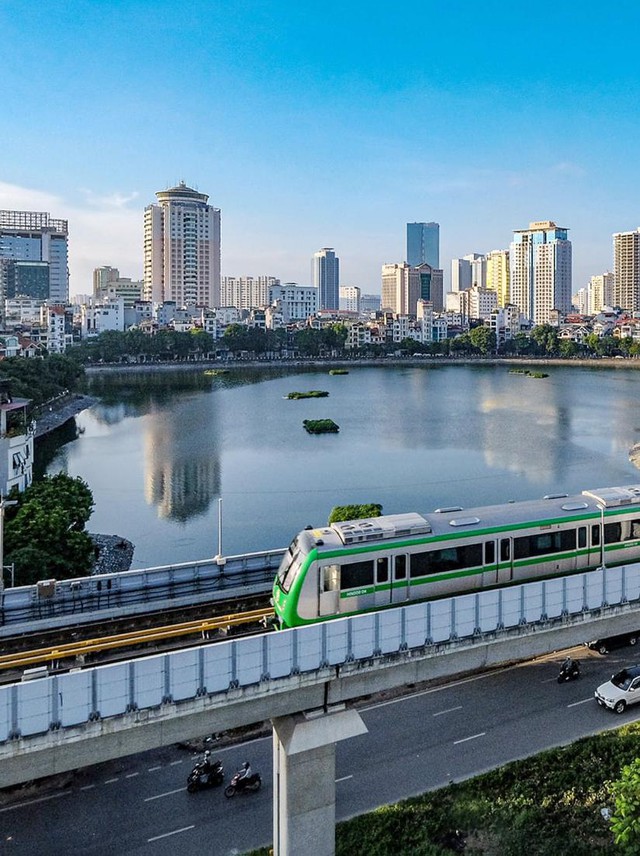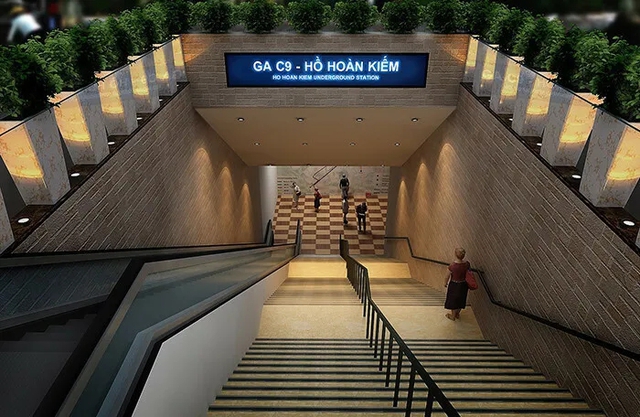Local infrastructure drive hinges on strategic investment
VGP - Ha Noi is seeking visionary, well-capitalized partners to help shape its future—not speculative players chasing short-term gains.

The Cat Linh - Ha Dong metro line in Hanoi, the first of its kind in Viet Nam and Ha Noi was officially inaugurated in Hanoi on January 13. After two months of operation, the service got its millionth passenger.
A stronger legal foundation
With more than eight million residents, Ha Noi is under growing pressure to expand transit systems, modernize housing, and clean up its air. To respond, city leaders have embraced a "nest for the eagles" strategy—creating favorable conditions to attract major investors and spur comprehensive growth.
This effort now rests on a legal framework established by Resolution No. 17/2025/NQ-HDND of the Ha Noi People's Council, which implements Articles 42.1 and 42.2 of the revised Capital Law.
The resolution serves as a charter for sustainable growth, granting Ha Noi more autonomy to set priority sectors and define clear investment criteria. If enforced effectively, it could channel capital more quickly into critical infrastructure.

Transport and urban planning priorities
Top of the list is transportation, where gridlock continues to erode both productivity and quality of life. Urban rail and mass transit are seen as the only sustainable solutions, yet their scale far exceeds public budgets—making global investment and technology essential.
Equally important is urban planning. Developing satellite towns with full services and infrastructure could ease pressure on the historic core while creating new growth hubs. If executed well, such planning could reshape Ha Noi's entire economic and social landscape.
Resolution 17 sets out practical mechanisms, introducing what officials call a "golden filter" to ensure only credible investors qualify.
Financial strength is the first test. For projects of national importance, such as rail systems or high-tech parks, investors must hold at least VND5 trillion (US$197 million) in charter capital or total assets of VND20 trillion (US$787 million). These thresholds are designed to prevent underqualified firms from derailing major projects.
Experience and technology carry equal weight. Ha Noi favors partners with a proven record in large-scale development and access to advanced solutions—bringing not only funding but also expertise in project management, risk control, and technology transfer.
Institutional responsibilities are also clarified: agencies screen applications, the municipal People's Committee reviews them, and the Ha Noi People's Council approves incentives and support. This layered process is intended to ensure transparency and align investment privileges with long-term goals.
Even with a solid framework, Ha Noi faces stiff competition for global capital.
To stand out, it must pair transparency with competitive incentives and simplified procedures. Persistent issues such as land clearance delays and fragmented agency coordination remain significant risks.
Yet these obstacles also create opportunities. By demonstrating political will, accountability, and disciplined execution, Ha Noi can show investors it is as ambitious as they are.
The stakes are high. This is about more than easing traffic or reducing pollution—it is about proving that Ha Noi's development model is both credible and sustainable. Success would make the capital a regional model for urban transformation. Failure would leave it mired in economic and literal gridlock.
Strategic investors will not wait forever. Ha Noi must match their ambition with effective governance—or risk seeing its future stuck in traffic.

The design of the C9 underground station for a metro project near Hoan Kiem Lake
List of underground projects open to investment
The Ha Noi People's Council officially passed a resolution establishing the first list of underground construction projects across the city that are being encouraged for private investment.
These include the expansion of the urban railway system, with a focus on underground metro lines, stations, and related facilities. It also calls for construction of underground networks to connect these metro stations with other public works, parkings, and basements of commercial buildings, hotels, and cultural centers.
The resolution encourages investment in road underpasses, underground roadways, and extensive public parkings. Furthermore, the initiative seeks to overhaul the city's technical infrastructure by moving systems for energy, public lighting, telecommunications, water supply, drainage, and waste management underground. The development of new subterranean public service facilities for culture, sports, commerce, and tourism is also a key component of the resolution.
The first phase of the investment list details an ambitious scope of work. For the urban metro system, it includes eight lines with a total length of 320.25 km and 191 stations, of which 81.2 km of track and 68 stations will be built underground.
The list also specifies 85 other infrastructure projects, including five major road underpasses, 78 underground parking lots, and two large-scale underground public complexes. Finally, the initiative targets the relocation of overhead power lines and telecommunication cables into shared underground tunnels along 95 designated city streets./.

